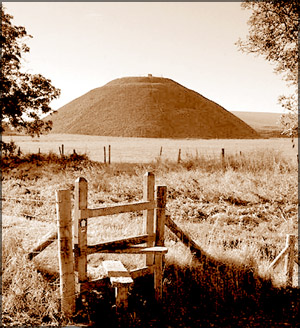
Engineers called in to save man-made hill
Emergency
work has begun to save Europe's largest prehistoric man-made
construction from collapse.
Tunnels built into the side of Silbury Hill in Wiltshire, UK are to
be filled with hundreds of tons of chalk to preserve the mysterious
Neolithic monument for future generations.
The 4,400-year-old mound, which is older than Stonehenge, has been
weakened by the excavations (digging) of archaeologists over many
centuries.
 Engineers
working on the conservation project have reached the centre of the mound
through a route dug in 1968 by a team led by Prof. Richard Atkinson. Engineers
working on the conservation project have reached the centre of the mound
through a route dug in 1968 by a team led by Prof. Richard Atkinson.
Jim Leary, an archaeologist for English Heritage, the custodians of
the site, said: "This is a unique project. Chalk has never been used to
shore up a monument in this way before.
"We plan to fill the voids either manually or by crushing the chalk
into a powder and blowing it in mechanically."
The latest excavations have resulted in the discovery of postholes in
the top of the hill, indicating that it was probably modified to house a
military base in the 11th century.
English Heritage said the shape of the 30 ft. high landmark was
probably quite different when it was first built.
Archaeologists believe the summit was changed from a dome to the
current "flat top" in Saxon or Norman times. They have also found two
iron arrow heads, which suggest the building on the top of the mound had
a military function, such as a defended lookout post or signal station.
Mr. Leary said: "We believe the top of the hill was literally 'lopped
off' around the time of the Battle of Hastings or even earlier when the
Danes attacked in 1006 to create flat land for use as a military base."
As well as establishing evidence of a fortress, archaeologists have
been able to re-date the third and final phase of the hill's
construction to around 2,000 BC, later than previously thought.
The original purpose of the hill is still a mystery.
Theories suggest it was a burial mound, a solar observatory or a
representation of a Neolithic goddess.
The Daily Telegraph
|
